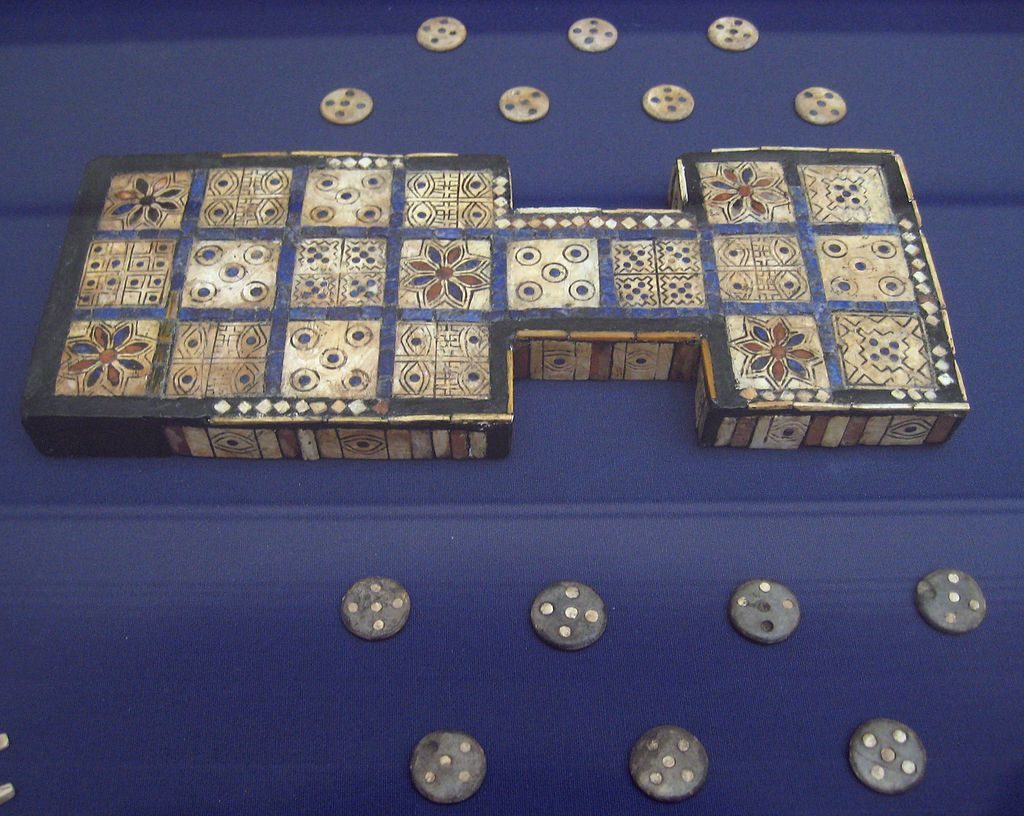- Download:
- MP3 Audio54 MB
 In the third episode of our holiday series of excerpts from William Caxton’s The Game and Playe of the Chesse, we learn about how the king and queen move, which was a bit different in the 15th century than it is today. We also consider the difficulty of working out the rules of an ancient game, even when you have the remarkable fortune to find them written down, as seen in the case of the Royal Game of Ur.
In the third episode of our holiday series of excerpts from William Caxton’s The Game and Playe of the Chesse, we learn about how the king and queen move, which was a bit different in the 15th century than it is today. We also consider the difficulty of working out the rules of an ancient game, even when you have the remarkable fortune to find them written down, as seen in the case of the Royal Game of Ur.
Today’s Text
- Caxton, William. The Game and Playe of the Chesse. Edited by Jenny Adams, TEAMS Middle English Text Series, U of Rochester, 2009, http://d.lib.rochester.edu/teams/publication/adams-caxton-game-and-playe-of-the-chesse.
- Finkel, Irving L. “On the Rules for the Royal Game of Ur.” Ancient Board Games in Perspective: Papers from the 1990 British Museum Colloquium, With Additional Contributions, edited by I.L. Finkel, British Museum Press, 2007, pp. 16-32.
References
- Becker, Andrea. “The Royal Game of Ur.” Ancient Board Games in Perspective: Papers from the 1990 British Museum Colloquium, With Additional Contributions, edited by I.L. Finkel, British Museum Press, 2007, pp. 11-15.
- Eales, Richard. “Changing Cultures: The Reception of Chess into Western Europe in the Middle Ages.” Ancient Board Games in Perspective: Papers from the 1990 British Museum Colloquium, With Additional Contributions, edited by I.L. Finkel, British Museum Press, 2007, pp. 162-168.
- Murray, H.J.R. A History of Chess. Clarendon Press, 1913.
- Murray, H.J.R. A History of Board-Games Other Than Chess. Clarendon Press, 1952.
Image: Board and pieces for the Royal Game of Ur, displayed at the British Museum (via Wikimedia Commons)



Leave a Reply